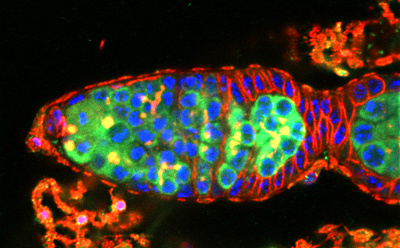Adipose tissue plays a major role in energy homeostasis and secretes circulating factors called adipokines that control physiological functions including appetite, insulin sensitivity, vasodilation, and reproduction. Dysfunction of the adipose tissue is characterized by insulin resistance, hypoxia, increased autophagy and apoptosis, and tissue inflammation, and causes altered adipokine secretion. Across a wide range of organisms, diet-induced adipose dysfunction is associated with fertility problems. For example, a high-fat diet leads to fewer maturing and more degenerating ovarian follicles in rabbits and blocked ovarian follicle maturation in mice. Despite the established relationship between nutrient availability, adipose tissue, and peripheral organ function, the cellular and molecular mechanisms underlying adipose communication with other tissues remain poorly understood.

In their new study titled "Ras/MAPK signaling mediates adipose tissue control of ovarian germline survival and ovulation in Drosophila melanogaster", recently graduated Dr. Tancia Bradshaw, her mentor Dr. Alissa Armstrong, graduate student Chad Simmons and biological sciences major Rachael Ott investigated the role of the Ras/mitogen-activated protein kinase (Ras/MAPK) pathway in fat-to-ovary communication using Drosophila as a model. They found that the Ras/MAPK signaling axis functions in adipocytes to regulate early germline cyst survival and ovulation of mature oocytes but is not important for germline stem cell maintenance or the progression through vitellogenesis. Thus, their studies uncover the complexity of signaling pathway activity that mediates inter-organ communication.